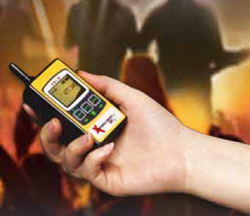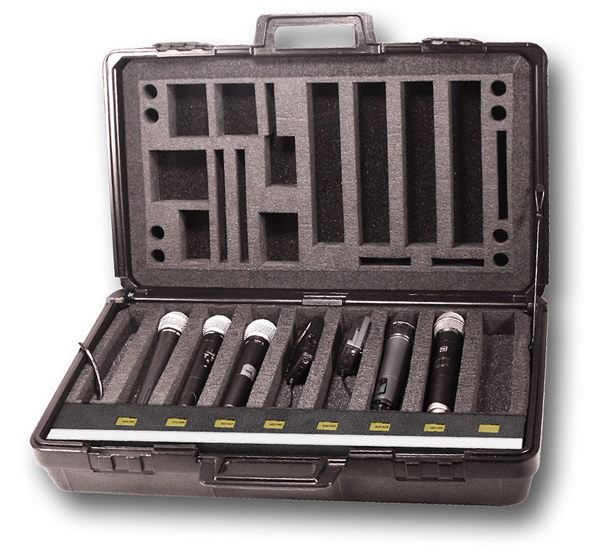
Flexible Options
The Save bank has 99 memory slots, and saved frequencies are entered into the slots in the resolution in which they were measured.
Data entry into the slots is sequential, and runs from 01 to 99 and then returns to 01 and rewrites over that slot.
To read the measurements, go to User > View, and use the up and down buttons to scroll through the list one at a time.
A clear function is not provided for the memory slots, so the user has three options to pinpoint the current set of saved measurements.
You can check the View menu and determine the first open slot number and remember it; not as satisfactory a solution. Or, you can save a 0.000 reading as a marker. Finally, you can reset the SOLO to its default settings, which empties the memory slots.
One useful note is that the RF-id SOLO is calibrated to be accurate to within 10 Hz. The user will typically find that the measured frequencies differ from the nominal carrier frequencies on which the wireless transmitters are said to operate – often by 2 kHz or more, either lower or higher. Wireless device operating frequencies are usually rounded to the nearest 0 or 5 kHz.

If desired, SOLO can be user-calibrated so that the measurements match your nominal wireless frequencies, basically introducing a slight degree of measurement bias into the tool.
Useful Tool
The RF-id SOLO and STATION are part of the Invisible Waves line of RF measurement tools that also includes the Invisible Waves X RF Command Center. This hardware/software blend combines radio spectrum analysis with the ability to select/monitor wireless channels and other frequencies of interest, as well as detect and identify potential interference, listen to the signals, seek clear spectrum, and set various alarms to warn of impending RF problems. It’s a solution that interfaces with a PC for processing and display of the signals.
In conclusion, the RF-id SOLO provides a simple and accurate way to read the frequencies of your wireless audio and communications equipment, gain information to troubleshoot frequency problems, aid in frequency coordination, and otherwise render the invisible visible.
If working with wireless is part of what you do for a living, the SOLO deserves a place in your toolkit. The RF-id SOLO retails for $225, and the RF-id STATION for $899. Find out more at www.kaltmancreationsllc.com.
Gary Parks has previously served as marketing manager and wireless product manager for Clear-Com Intercom Systems, and has also worked with Electro-Voice and Meyer Sound. He is currently with EDX Wireless and is also a free-lance writer.
